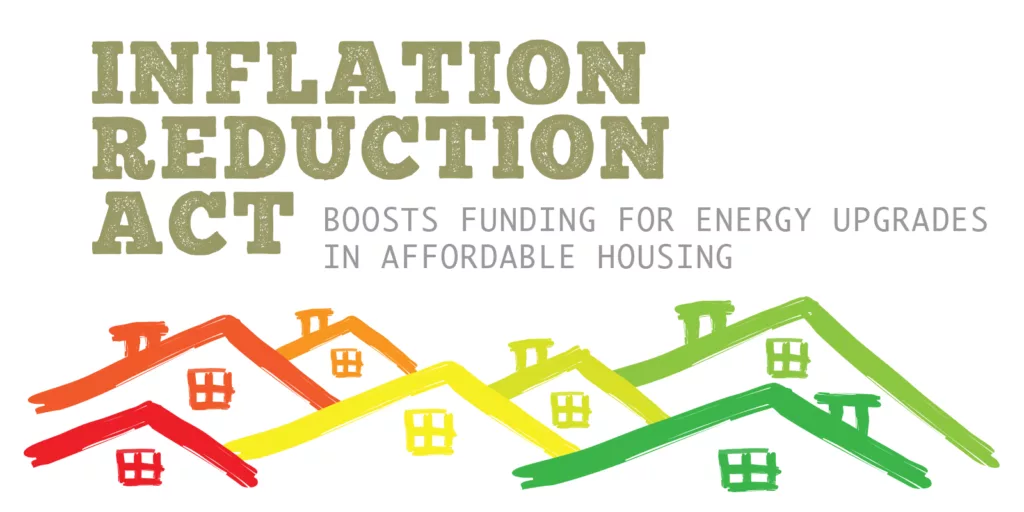By: Amie Gray
When considering the Qualified Contract process, price calculation can help determine whether or not to seek early release from IRC Section 42 compliance.
Is Qualified Contract Right for Me? Let’s Do the Math.
Multi-family housing values continue to rise along with demand in many parts of the country. This poses a new challenge for owners and buyers of properties that were built using Low-Income Housing Tax Credits (LIHTC), which seek an early release from the affordability restrictions using the Qualified Contract (QC) option under Section 42 of the Internal Revenue Code (IRC).
Under the LIHTC program governed by IRC Section 42, LIHTC properties are subject to a minimum 30-year affordability commitment: a minimum 15-year Initial Compliance Period, plus a minimum 15-year Extended Use Period by way of the LIHTC Land Use Restriction Agreement (LURA) placed on the property. This commitment places limitations on the amount of rent that can be charged and limits the pool of potential residents to only those who have income levels under applicable income limits. The QC option in IRC Section 42 allows owners to “opt-out” of the program beginning in Year 15 by requesting a release from the affordability restrictions from the State Housing Finance Agency (HFA).
The QC process differs for each state and involves submitting an application to the State HFA any time after the 14th year of the Initial Compliance Period (or whatever year is stated in the LURA). Once the application is submitted, the State HFA has a one-year period to procure a buyer who will maintain the affordability restrictions through the Extended Use Period. If, after the one-year period, the State HFA cannot secure a buyer, then the project is released from the LIHTC affordability restrictions, and those restrictions are phased out over three years for existing tenants.
Before submitting a QC request, it’s important to evaluate the value of your property by calculating the Qualified Contract Price (QCP) in accordance with the formula laid out within IRC Section 42. Owners may discover that the QCP is lower than the property’s Fair Market Value (FMV), increasing the likelihood of the State HFA finding a buyer. This doesn’t happen often but could occur in some markets with high property values.
Considering these potential risks, we encourage owners to take time to understand the QC option and determine if it helps them achieve their goals. Tidwell Group assists with calculating the QCP, helps owners consider their options within each state’s guidelines, and walks owners through the entire process. Prior to taking a LIHTC property through QC, Tidwell Group recommends having a CPA firm prepare the QCP calculation in order to determine if the price is higher or lower than the property’s FMV.
How a Qualified Contract Application Works
As an important first step, owners should review original applications and the Tax Credit LURAs to note any waivers or other restrictions on the property. Sometimes, the developers or property owners of LIHTC properties have elected to waive their right to request a QC, usually to achieve more favorable tax credit application scoring.
If no waivers exist, owners will need to determine the status of the property’s Initial Compliance Period and/or the Extended Use Period. To request a QC, applicants can submit the request in the last year of the Initial Compliance Period or any time within the Extended Use Period. As stated above, the Initial Compliance Period is a minimum of 15 years; however, additional years may be added based on commitments made by the original owner/developer when the LIHTC application was awarded. Any additional restrictions will be documented within the LURA, which is why it’s important for owners to review the Tax Credit LURA to determine when the LIHTC project is eligible for QC.
As part of the QC application, owners must provide a calculation of the QCP. This calculation would ideally be determined by a CPA with specific knowledge of the formula laid out in IRC Section 42 related to calculating the QCP. This complex pricing formula is designed to give the property owner an inflation-adjusted return on the original equity contribution used to purchase the LIHTC.
The formula calculates the price as a function of the income-restricted portion of the building(s). It takes into account the FMV of the land (as-is, income-restricted) and any unrestricted housing units. The calculation is broken down into five sections:
- Outstanding debt on the property (limited to the original debt placed on the property used to pay for depreciable building costs);
- Original equity used to purchase tax credits increased by the Cost-of-Living Adjustment from the first-year tax credits were claimed;
- Additional capital contributions not reflected in items (1) or (2) above;
- Cash distributions from or available from the property (reduction to price); and
- FMV of land and the non-low-income portion of the property (an appraisal is used to determine the FMV of the land (as-is, assuming restrictions remain in place) and any unrestricted housing units.).
Each State’s HFA application process is different, but in general, the acceptance of the application triggers the start of the one-year period during which the State HFA must work to secure a buyer who will maintain the property with the affordability restrictions in place through the Extended Use Period.
It’s important to note that as it relates to QCs, the State HFA’s sole responsibility is to present the owner with a buyer. Suppose the State HFA presents the owner with a buyer, and the sale does not close due to a default by the owner or other matters within the owner’s control. In that case, the one-year period ends, and the owner is required to continue operating the property with the affordability restrictions in place for the life of the Extended Use Period.
On the last day of the one-year period, if the State HFA is unable to find a buyer, the property is released from the LIHTC affordability restrictions; however, any existing low-income tenants will be grandfathered in for three years (De-control Period). During the De-control Period, rent for existing low-income tenants will not increase more than the annual increase allowed by the State HFA or the maximum LIHTC rent allowed for that area.
It is important to note that the QC option only releases owners from the affordability restrictions associated with the LIHTC. If there are other restrictions on the property from a debt instrument (HOME Loan, Tax-Exempt Bonds, etc.), those restrictions may remain on the property even if the property is released from the Tax Credit LURA. In other words, some restrictions will expire when loans are paid off. However, depending on the terms of the individual Restrictive Covenants provided for in the specific debt instrument used, other restrictions will persist for a set period.
Calculating the QCP
If you are a potential buyer and plan to use the QC option to remove affordability restrictions on a LIHTC property, there are some critical pricing considerations. You will want to ensure that the FMV of the property does not exceed the QCP. In such cases, the property is much more likely to be purchased during the one-year period. In areas of high property values, you’ll want to have a contingency plan in place in the event that someone does offer to purchase the property. In addition, carefully read the affordability restrictions within the property’s LURA to confirm that the property has not waived its right to a QC.
As part of their due diligence, buyers of LIHTC properties should request the following documents from the seller in order for a CPA to calculate the QCP:
- Audited financial statements from the placed-in-service date through the most recent year-end;
- Tax returns from inception through the most recent year-end;
- Final Cost Certification prepared when the property was placed in service;
- Partnership Agreement with all amendments;
- Original Loan Documents;
- Land Use Restriction Agreement/Covenants;
- 8609s with Part II completed.
If you own a LIHTC property and want an early release from the affordability restrictions, you should conduct a price calculation to determine if the QCP is higher than FMV. The price calculation process can also compare the price per unit to other properties in your state currently exercising their right to QC. If the QCP per unit is lower than comparable properties and the total price is lower than FMV, QC may not be the best option for you, as there has been an increase in Qualified Buyers purchasing properties through the QC process.
Although the QC option is outlined in IRC Section 42, the IRS has never issued final regulations detailing the process. As a result, each State HFA has the authority to design its own regulations for implementing the QC process. Because of this, the process is different for every state. Differences from state to state include but are not limited to, variations in the QCP formula, documents required for submission, and application fees. For instance, some states require all audited financial statements and tax returns for the entire Initial Compliance Period and will not accept an application if the owner does not submit information for one of the years in the Initial Compliance Period. Also, some states require developers to waive their QC rights during the LIHTC application process, which has resulted in no QC-eligible properties in those states.
In the past, legislation has (unsuccessfully) proposed to remove the QCP formula as provided in IRC Section 42 and, instead, offer projects for sale based on the FMV as determined by an Appraiser. This approach would essentially eliminate (or significantly reduce) the ability of owners to remove the LIHTC affordability restrictions. Additionally, the QC option has been highly frowned upon by State HFAs and legislators. Historically, the affordability restrictions target individuals who make 60% or less of the Area Median Income (AMI). Instead of removing the QC option or amending the calculation, it might be more advantageous to raise the affordability restrictions to accept individuals who make between 80%-120% of the AMI. This would allow owners to refinance existing loans in order to infuse capital into projects for improvements/repairs and provide housing for those middle-income individuals who currently have limited options.

The team at Tidwell Group has extensive knowledge of the application process for each state and a thorough understanding of IRC Section 42 and calculating the QCP. We can use our experience and understanding of the program to evaluate whether or not QC is right for you, — and the likelihood of your LIHTC property being released from the LIHTC affordability restrictions.
Contact Amie Gray to discuss your goals.










